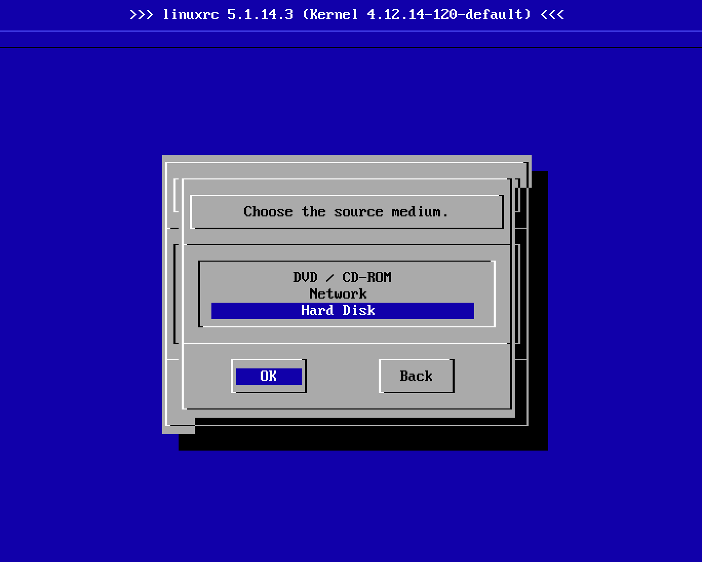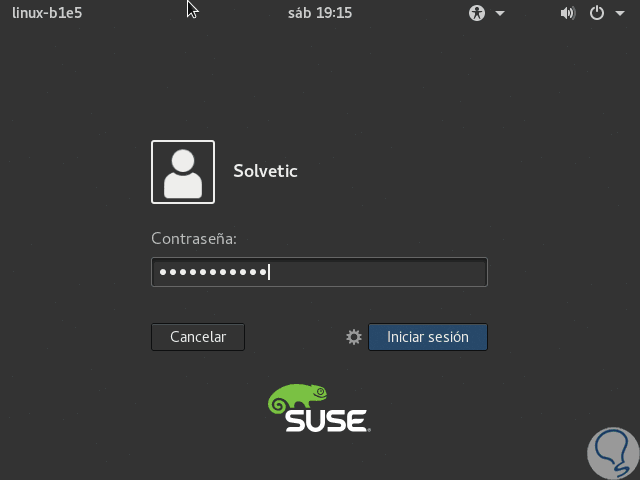


- SLES12 CREATE BOOT PARTITION INSTALL
- SLES12 CREATE BOOT PARTITION SOFTWARE
- SLES12 CREATE BOOT PARTITION ISO
For details on what modes are supported by each OS, see the Insight Management Support Matrix. For more information, see the online help topic “Combine multiple Build Plans to perform many tasks at once”.
SLES12 CREATE BOOT PARTITION INSTALL
If you plan to install different OSs on a server, each of which requires a specific boot mode, you can combine one of these Build Plans with an OS installation job to ensure that the boot mode is set correctly for the OS Build Plan you want to run. In the BIOS, locate your computer’s boot. If the disk already has an MBR, SUSE Linux Enterprise Server allows you to create additional partitions in it which can be used as the installation target. The MBR only supports four primary partitions. It is sometimes also called an MS-DOS partition table. On the first screen that you see when your computer boots up, you will find instructions to press a specific key which, in most cases, is Delete, F1 or F2 to enter your computer’s BIOS / Setup. Once you set the boot mode on a server, it will not change until you set it to another mode. In order to do so, you need to: Start your computer up. There is also a ProLiant HW – Clear UEFI Boot Menu Build Plan. Then, you need to utilize that extra space by partitioning it.

This will increase the hardware disk that your Virtual Machine can see. First, you need to increase the disk’s size in your vSphere Client or through the CLI. You can change the boot mode on this server manually via the RBSU.įor more information on these Build Plans, see the Insight Control Server Provisioning Build Plans Reference Guide. To increase the size of your VMware Virtual Machine, you need to do 2 major steps.

These Build Plans do not work on the ProLiant DL580 Gen8Plus server. Anything other than UEFI_OPTIMIZED_SECURE disables UEFI secure boot. Use -bootmode=UEFI to turn off optimized mode, and use -bootmode=UEFI_OPTIMIZED_SECURE to enable secure boot. To change those settings to either disable UEFI optimization or enable secure boot, make a copy of the Build Plan and change the -bootmode parameter in the Control Boot Mode step. The ProLiant HW – Switch to UEFI boot mode and Power Off Build Plan sets the boot mode to UEFI with optimized enabled and secure boot disabled. ProLiant HW – Switch to UEFI boot mode and Power Off ProLiant HW – Switch to Legacy BIOS boot mode and Power Off Cluster members, state, changes, and overall health of the cluster) Ceph Object Storage Device (OSD) It interacts with a logical disk (e.g.
SLES12 CREATE BOOT PARTITION ISO
There are two Hewlett Packard Enterprise provided Build Plans that enable you to set the boot mode on a server: Create the mount point directory on Linux: sudo mkdir /mnt/iso Mount the ISO file on Linux: sudo mount -o loop /path/to/my-iso-image. 7 Ceph Storage Cluster Ceph Monitor It maintains a master copy of the cluster map (i.e. Then, run your OS installation Build Plan. Use the RBSU menu to access and use both UEFI and Legacy BIOS options. Excluding this, if you want to make any other partition as an active bootable partition, then follow the guide mentioned below. Step 2: In the Status column, boot partition must be marked as Boot. Set the desired boot mode using one of the Hewlett Packard Enterprise provided Build Plans or manually in the ROM-Based Setup Utility (RBSU). Step 1: Go to Control Panel - System and Security - Administrative Tools - Computer Management - Disk Management. Hewlett Packard Enterprise provided Build Plans are designed to work for all supported servers, regardless of the boot mode. All three UEFI modes are supported: UEFI without optimization, UEFI Optimized, and UEFI Secure. You can use IC server provisioning to provision UEFI capable servers in either Legacy BIOS boot mode or UEFI boot mode.
SLES12 CREATE BOOT PARTITION SOFTWARE
UEFI defines a software interface between an operating system and platform firmware and is an alternative to the Legacy BIOS (Basic Input/Output System) firmware interface that has been in use for many years. ProLiant servers with UEFI (Unified Extensible Firmware Interface) are supported.


 0 kommentar(er)
0 kommentar(er)
